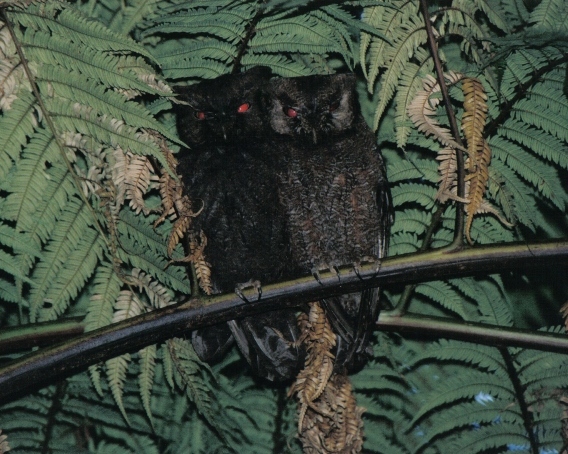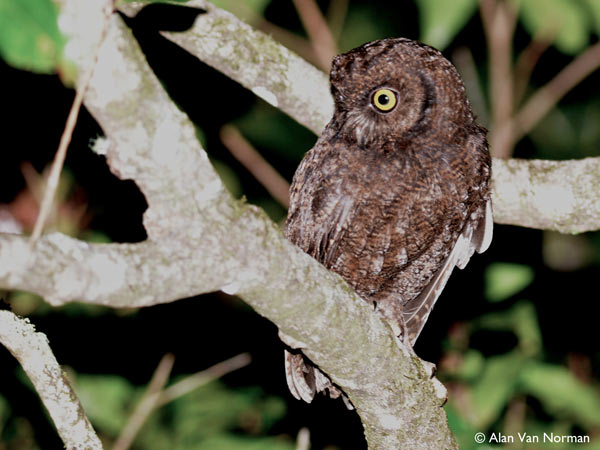Anjouan Scops Owl
The Anjouan Scops Owl ( Otus capnodes ) is a rare Zwergohreulenart within the family of owls authentics which is endemic to the Comorian island of Anjouan.
Description
The Anjouan Scops Owl was originally regarded as a subspecies of the Madagascar Scops Owl ( Otus rutilus ). From it the Angouan Scops Owl by a darker plumage, reduced white markings on the scapulars, longer wings and the featherless lower Tarsuspartie different. The shaft stripes on the outer seams of the primaries are yellowish brown. After John Henry Gurney's original description it reaches a size of 20 to 22 cm. The wing length is 171 mm and the Tarsuslänge 34 mm. There are two color morphs: one is dark brown and the other has a lighter reddish brown coloration. The ear tufts are very short and usually not visible. Your reputation is a rather reminiscent of waders long-drawn whistle, which is expressed in intervals of 10 seconds.
The species inhabits the remnants of primary high-altitude mountain forests of the island at altitudes higher than 500, but usually about 800 meters. About food, hunting manner and breeding biology are no data.
Endangering
The Anjouan Scops Owl was 1886-1992 as extinct. From 1884 to 1886 31 copies were shot, now preserved in the Natural History Museums of Cambridge, London, New York, Norwich and Paris. 1906 and 1907 could no longer be detected copy. 1959 failed a search, which was made by the English ornithologist Constantine Walter Benson on behalf of the British Ornithologists ' Union. In June 1992, the species was rediscovered in a forest fragment near Lingoni. Accurate information on stocks are not backed up. During a census in 1995 yielded 96 specimens, estimated the ornithologist Roger J. Safford 1999, the population on 200 couples. The Anjouan Scops Owl comes only in a very small fragmented forest area in front of 120 km ², which is threatened by agricultural land use, deforestation and charcoal production. Invasive plant species such as Rubus rosifolius and the lantana represent an additional risk, as this owl built their breeding and sleeping in caves only indigenous trees. Cyclones and entrained house rats also put to the portfolio. Plans to introduce the Anjouan Scops Owl on the neighboring island of Mohéli were not realized because one negative implications for only discovered in 1995 Mohéli Scops Owl ( Otus moheliensis ) feared.










